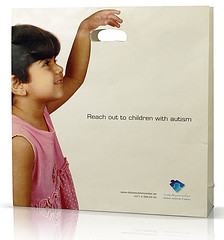Posted on 25 May 2011. Tags: 17 years, death with dignity act, film director, lethal drugs, peter richardson, physician assisted suicide, prostate cancer, suicide law, terminally ill, thursday film
 It may sound contradicting but the director of a documentary entitled “How to Die in Oregon” hopes that his film teaches people a thing or two about living life. The documentary is about physician-assisted suicide law in Oregon.
It may sound contradicting but the director of a documentary entitled “How to Die in Oregon” hopes that his film teaches people a thing or two about living life. The documentary is about physician-assisted suicide law in Oregon.
The film director, 31-year old Peter Richardson, wants us to better understand the “Death with Dignity Act” in Oregon that has been in place for 17 years. Oregon is one of the very few states that allow physician-assisted suicide. Doctors can basically prescribe and administer lethal drugs to a patient who is terminally ill and has less than six months to live.
Richardson said it is not going to be a depressing film. In fact, he added that those who have seen the documentary are surprised by how much laughter and humor there is in the movie. He describes his film as “tragic but life affirming.”
The film revolves around a 54-year old woman, Cody Curtis, who has been given only six months to live after she has been diagnoses with advance stage liver cancer. The thoughts of her doctors, her husband and kids, and her own were caught on camera during heart-wrenching interviews.
Richardson said that in the film you will understand that going through physician-assisted suicide is not an easy choice. He added that although Curtis has grace and dignity in suffering, she also thinks there is dignity in accepting the things we cannot change.
The film also documented the lives of those who are not too happy with the law, including an uninsured 53-year old man with prostate cancer. In the film, the state denied him of health care and his doctors offered physician-assisted suicide instead.
The documentary won as the best nonfiction film at the Sundance Film Festival earlier this year and is scheduled to debut on HBO on Thursday.
Posted in Entertainment
Posted on 24 May 2011. Tags: 17 years, 40s, adhd symptoms, developmental disability, genetic disabilities, government researchers, language barrier, low income families, other important findings, pediatrics
 Government researchers have reported recently that one in every six American children born today has developmental disability which includes ADHD and autism. That is a sharp 17% rise from the data collected 10 years ago.
Government researchers have reported recently that one in every six American children born today has developmental disability which includes ADHD and autism. That is a sharp 17% rise from the data collected 10 years ago.
The study that was published in “Pediatrics”, discovered that around 15% of American children between 3 and 17 years old have been diagnosed with the disorder between 2006 and 2008; that is a total of 10 million children. In comparison, only 8 million children were diagnosed between 1997 and 1999.
Although researchers saw a general increase in developmental disability cases, including learning disabilities and stuttering, the increases were most significantly seen in ADHD and autism cases. ADHD cases, for example, rose from 5.7% in 1997-1999 to 33% in 2006-2008.
The study noted that more boys were diagnosed with the disability than girls. Males have higher tendencies of inheriting genetic disabilities than females. Also, ADHD symptoms are more pronounced in boys than in girls; thus, the former is more easily diagnosed than the latter.
Some other important findings of the study include the fact that ADHD and autism cases are higher among children on Medicaid and those who are from low-income families. Also, researchers noticed that cases of developmental disabilities are lower among Hispanic children than black or white Americans. They, however, noted that the language barrier may be the reason for this data and it may not necessarily reflect the correct rate.
It is still unclear to the researchers why there was a significant increase in the cases of ADHD, autism, and developmental disability in general. However, they said that it may be due to the increase of preterm labor and the mother’s age during pregnancy. Children born prematurely have 30% to 60% more chances of developing ADHD than those who were born full term. Also, mothers who give birth in their 40s have greater chances of having an autistic child than those who are in their 20s.
Posted in Health
 It may sound contradicting but the director of a documentary entitled “How to Die in Oregon” hopes that his film teaches people a thing or two about living life. The documentary is about physician-assisted suicide law in Oregon.
It may sound contradicting but the director of a documentary entitled “How to Die in Oregon” hopes that his film teaches people a thing or two about living life. The documentary is about physician-assisted suicide law in Oregon.
 Government researchers have reported recently that one in every six American children born today has developmental disability which includes ADHD and autism. That is a sharp 17% rise from the data collected 10 years ago.
Government researchers have reported recently that one in every six American children born today has developmental disability which includes ADHD and autism. That is a sharp 17% rise from the data collected 10 years ago.